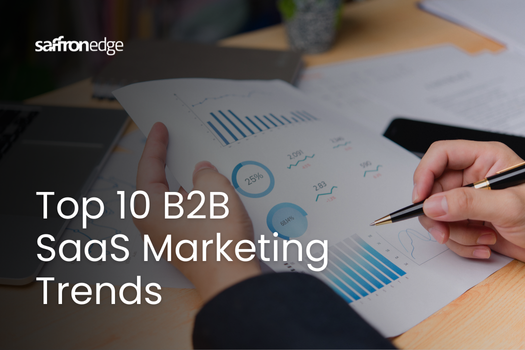Contents
Innovations are frequently on the verge of failure in the competitive software market without a precisely developed Go-To-Market (GTM) strategy. Harvard Business School's startling discovery, which cites a shocking 95% yearly failure rate for new goods, emphasizes the need for a well-defined strategy.
This guide answers the key question, "Do you need a GTM?" A loud yes rings across the sector, highlighting that most creative ideas risk oblivion without this strategic blueprint. The importance of incorporating elements like the saas marketing plan template and saas growth strategies into the GTM strategy becomes apparent within this context. Navigating the treacherous waters of product launches demands a well-thought-out plan that avoids pitfalls and focuses on determining the best product-market fit and setting realistic expectations.
As the blog progresses, it reveals the crucial role that a GTM strategy plays in directing products away from failure and onto a path of sustainable success.
What Is a B2B SaaS Go-To-Market Strategy?
A robust B2B SaaS go-to-market strategy, including an effective saas lead gen approach, is crucial for successfully launching and promoting software-as-a-service products. Companies who plan and execute their SaaS sales strategy well can reach their target audience faster and convert them into loyal customers.
No matter where your product is in the launch life cycle, you can create a winning go-to-market strategy using the tips and examples outlined below.
B2B SaaS refers to organizations that provide software-as-a-service to other companies. It includes companies that offer software, apps, extensions, or add-ons delivered over the internet or cloud.
A B2B SaaS go-to-market strategy is a framework that lets companies connect with, engage, and attract the ideal audience to achieve their revenue and profit goals.
To create a successful go-to-market strategy, companies need to:
- Identify their end-user companies.
- Craft compelling messages that highlight how their product solves their problems.
- Establish appropriate pricing, sales, marketing, and distribution strategies.
Successful saas branding involves creating a strong brand identity, building trust, and fostering customer loyalty. Implementing these elements into your B2B SaaS go-to-market strategy and drawing insights from the success stories of popular saas products can increase your chances of reaching your target audience and positioning your product as a preferred choice in the competitive SaaS landscape.
Why GTM Matters?
A GTM strategy serves as a navigational compass, helping businesses avoid pitfalls, identify the right product-market fit, and set realistic expectations. It's the linchpin for successful product launches, steering clear of oversaturated markets and unsustainable customer acquisition strategies.
The Uniqueness of B2B SaaS GTM Strategies
- Foundational Product Strategy: The GTM strategy for B2B SaaS is foundational to the product strategy itself, mapping out how the evolving software-as-a-service can bring value to both existing and potential customers. Incorporating as saas affiliate marketing tactics ensures that the strategy considers the core product and explores collaborative opportunities through affiliate partnerships, thereby expanding the reach and impact.
- Intangible Nature of SaaS Products: In B2B SaaS, every value proposition involves inherent service, as software functionality and value continuously evolve with updates, necessitating tailored product launch messaging. The integration of saas reporting and SaaS dashboard is crucial, recognizing the need for comprehensive reporting features to provide businesses with insights and analytics to optimize their operations.
- Targeting Companies, Not Consumers: The GTM strategy shifts focus to companies, requiring sales teams to identify suitable businesses and pinpoint roles and titles of stakeholders influencing purchasing decisions.
- Utilization of Outbound Methods: In B2B SaaS, cold email and outbound strategies are more prevalent and effective than in B2C, reflecting the professional context of B2B interactions. Implementing accurate Saas ltv calculation and monitoring saas conversion rates are essential for fine-tuning outbound methods tailored to the specific needs of targeted businesses.
- Impact of Company Size: The GTM strategy is influenced by the size of targeted companies, whether small businesses, startups, SMBs, or enterprises, shaping the approach to meet the unique needs and challenges of each segment.
Building the Blueprint:
Beginning with a focus on growth strategy, the basic phases include developing a unique value proposition, assessing rivals, and building a niche. Shifting perspective to see the product as a methodology rather than just a product, and developing several Go-To-Market (GTM) strategies—differentiated, dominating, discrete, and disruptive—adds depth to a holistic approach. This comprehensive approach offers a well-rounded and adaptable strategy for navigating the difficulties of the software business, from the early stages to long-term growth.
Pricing Models and Success Metrics:
A strong Go-To-Market (GTM) strategy requires strategic pricing model selection and the identification of important success measures such as Churn Rate, Customer Acquisition Cost (CAC), Monthly Recurring Revenue (MRR), and Customer Lifetime Value (CLTV). These data are critical in defining client retention decisions, effectively allocating acquisition costs, and accurately anticipating future income. By carefully managing these components, organizations may ensure a well-informed and long-term approach to their GTM strategy in the evolving landscape of the software industry.
The Path to Success:
Begin a complete journey with the step-by-step approach to developing a strong Go-To-Market (GTM) plan. Examine critical components such as growth strategy, defining your goals, strategies, and competition. Discover the heart of a great value proposition, and ensure that your solution properly solves client pain areas.
Conduct a detailed investigation of the competitive landscape, leveraging perceptual maps for strategic positioning. Investigate the importance of niche development, adapting your approach to a certain market for maximum effectiveness. Accept solution selling and prioritize client requirements and concerns to build long-term partnerships.
Navigate many GTM techniques, such as differentiated, dominant, discrete, and disruptive methods. Choose pricing models judiciously, aligning them with your product and audience. Define success metrics, focusing on customer acquisition cost (CAC), customer lifetime value (CLTV), and channel-wise spending. Integrate CRM tools seamlessly to fortify customer relationships and streamline communications. This comprehensive guide empowers businesses to embark on a well-informed GTM strategy, maximizing their potential for success.
Three types of Go to market strategies
- go-to-market (GTM) strategy, particularly in the realm of SaaS website design, centers around using the product itself as the primary driver for user acquisition and expansion. It relies on enticing users to try the product, experiencing its value firsthand, and assumes that satisfied users will drive adoption and spread brand awareness. Also known as bottom-up or user-influenced GTM motion, this approach is commonly associated with freemium models where the basic product is free, and users can upgrade for additional features. Organizations employing this strategy target technically savvy users in smaller companies. The entry price is usually low, scaling with increased usage. Users can independently adopt the solution and play a significant role in buying decisions. Successful implementation of this strategy requires ongoing user feedback, with marketing teams focusing on messaging that highlights the product’s features and functionalities. Additionally, leveraging Saas reviews becomes crucial in establishing credibility and trust, as positive reviews can significantly influence potential users' decisions to try the product.
- Sales-led go-to-market strategy, particularly applicable for providers offering high-end, complex products like enterprise software solutions (commonly referred to as Saas sales meaning), relies heavily on marketing and sales efforts to drive customer acquisition. This approach involves building a robust sales team and channel partnerships. Particularly suitable for providers offering high-end, complex products like enterprise software solutions, it demands a consultative approach. Often termed outcome-based or value-oriented GTM motion, marketers following this path allocate considerable resources to promotional tactics such as ads on review sites, trade shows, events, and advertising campaigns. This strategy is effective when targeting non-technical users in large organizations, where the sales process is complex, requiring high-touch sales and support. In these scenarios, users have minimal impact on buying decisions, and the price point is high, with custom quotes often provided in consultation with sales representatives.
- A hybrid GTM strategy combines elements of both product-led and sales-led approaches, creating a comprehensive strategy leveraging the strengths of both. It utilizes product-led GTM tactics to drive awareness and prospects' interest while relying on sales to generate most of the revenue. This approach is adopted by companies with diverse target audiences, offering both free and premium versions of their products. It aims to create self-sustaining growth loops, turning users into loyal customers and advocates who contribute to the growth cycle.
Key Considerations:
The guidance highlights the need to avoid resource waste by understanding customer demands, integrating customers into the Go-To-Market (GTM) strategy, and establishing a clear path to market. It emphasizes the importance of sanity-checking product concepts while distinguishing between B2B SaaS GTM strategy and marketing strategy. By prioritizing customers, ensuring strategic targeting, and meticulous planning, businesses can avoid pitfalls, optimize resource allocation, and distinguish between the critical components of a successful GTM strategy and an overarching marketing approach, thereby strengthening their competitive position. Additionally, staying attuned to trends in best SaaS website designs can further enhance the overall effectiveness of the Go-To-Market strategy.
GTM Strategy Examples:
Real-world success stories demonstrate the effectiveness of various Go-To-Market (GTM) tactics.
- Loom, a screen recording application, capitalized on the power of viral sharing, pushing market adoption by allowing users to easily share captured films. In its pre-launch period,
- Slack flourished on word-of-mouth marketing and a self-service strategy, gaining 8,000 sign-ups on the first day.
- Taxjar distinguishes itself by providing authoritative material and portraying itself as an industry expert on tax-related issues.
- Dropbox used content marketing deliberately, employing videos and webinars to engage a wide range of corporate audiences.
- Asana's communications centered on a core brand theme, stressing simplicity of use, scalability, and cost.
Conclusion:
In essence, a thoroughly developed SaaS Go-To-Market (GTM) strategy is more than just product releases; it serves as a comprehensive road map for long-term success. Businesses may successfully traverse the competitive landscape by delving into the complexities of their products, and market dynamics, and executing effective strategies. This handbook emphasizes the critical role that a GTM strategy plays in reducing failure risks, achieving a harmonic product-market fit, and laying a solid basis for long-term success in the ever-changing world of SaaS. Businesses that use strategic planning and agility can not only weather the challenges of early launches but also position themselves for long-term success in the changing terrain of the Software as a Service market.
Get The SaaS Marketing Toolkit
Related Blogs
We explore and publish the latest & most underrated content before it becomes a trend.
3 min read
An Easy Checklist To Measure The Competence Of Your Inbound Marketing Agency
By Praveen Kumar7 min read
How To Optimize A Law Firm's Frequently Asked Question Page?
By Sabah Noor
Subscribe to Saffron Edge Newsletter!

Get The SaaS Marketing Toolkit










